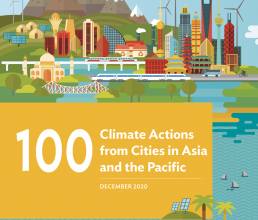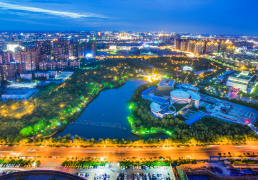First appeared in

Asian Development Bank
100 Climate Actions from Cities in Asia and the Pacific
Xiangtan’s new traditional medicine hospital will integrate green building design, clean energy technologies, and ecosystem-based adaptation measures to make the structure low-carbon and resilient.
Xiangtan’s new traditional medicine hospital will integrate green building design, clean energy technologies, and ecosystem-based adaptation measures to make the structure low-carbon and resilient.
Xiangtan’s new traditional medicine hospital has applied passive building design by incorporating better building materials and water and energy saving features, resulting in 20% savings in water and energy compared to other conventional hospitals. The new traditional medicine hospital will be the first certified hospital in the PRC for Excellence in Design for Greater Efficiencies (EDGE) – a Green Building Certification. In addition, the enhanced use of ecosystem-based adaptation measures on the hospital premises will reduce the vulnerability of the hospital to floods and droughts, both of which are expected to increase in the region due to climate change.
3.2K
TONS OF CO₂ EQUIVALENT REDUCED ANNUALLY
In order to optimize the energy efficiency of the planned hospital, a natural gas-based combined cooling, heating, and power generation (CCHP) system will be utilized. The CCHP system will be integrated with a rooftop solar system to significantly improve the energy efficiency of the hospital. Moreover, the CCHP can be operated off-grid, which helps make the hospital resilient to power outages .Planners have embraced an ecosystem-based adaptation design to provide flood protection and increase the overall resilience of the structure. A range of rainwater retention measures will be employed, including rainwater gardens and harvesting, permeable pavement, green roofs, and retention ponds, with a total water storage capacity of 7,840 cubic meters.
ADB provided a loan to cover the $98 million cost of the Xiangtan new traditional medicine hospital, which is a part of ADB’s $150 million loan to the Xiangtan Low-Carbon Transformation Project.

Xiangtan’s new traditional medicine hospital will be PRC’s first hospital to receive Excellence in Design for Greater Efficiencies (EDGE)-certification (photo by Fang Yang).
The Challenge
Xiangtan’s recent urban growth has been accompanied by an increase in greenhouse gas emissions, and the city’s new hospital will be built in a flat and flood-prone area.
Co-Benefits
Economic The EDGE-certified measures will save the hospital 4,400 MWh of energy and 27,800 cubic meters of water each year, resulting in cost savings of $580,000.
Health Green zones around the hospital will improve local air quality and provide a recreational space for staff, patients, and visitors.
Environment Ecosystem-based adaptation measures will provide more green spaces, which will strengthen biodiversity and serve as a source of medicinal plants and herbs.

